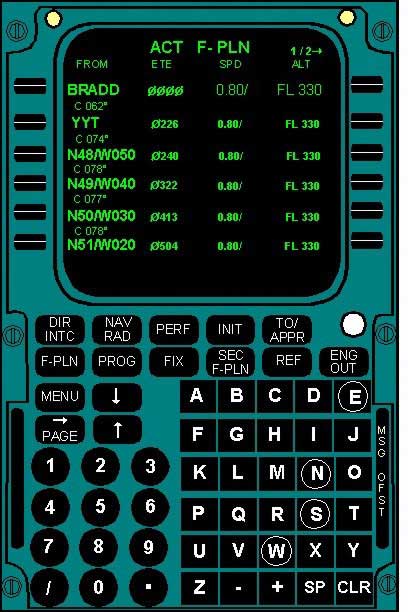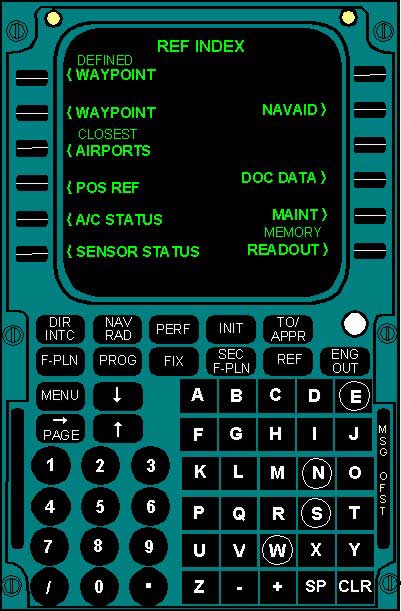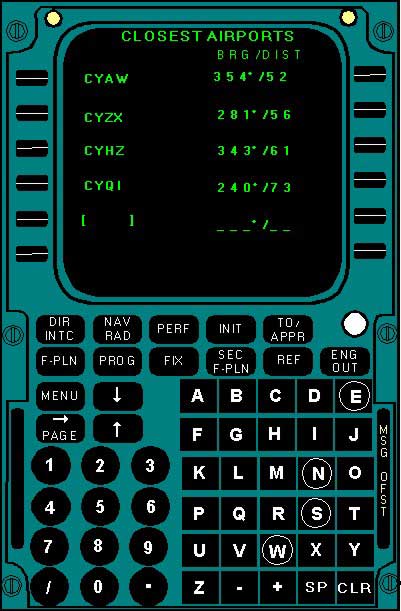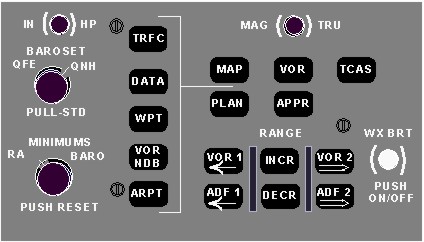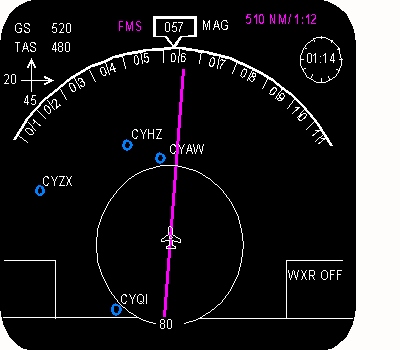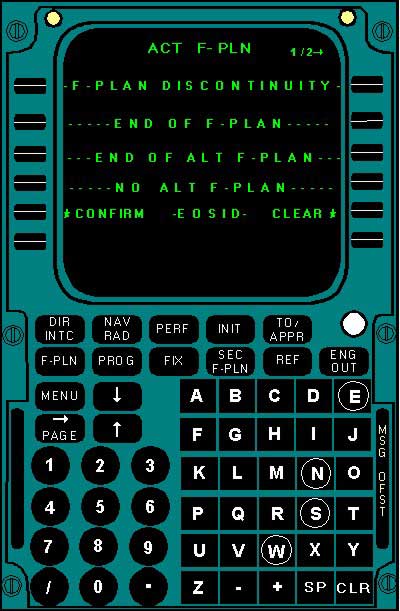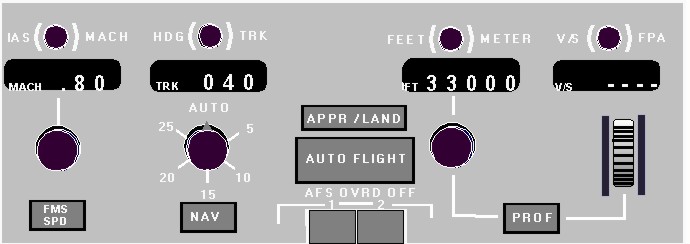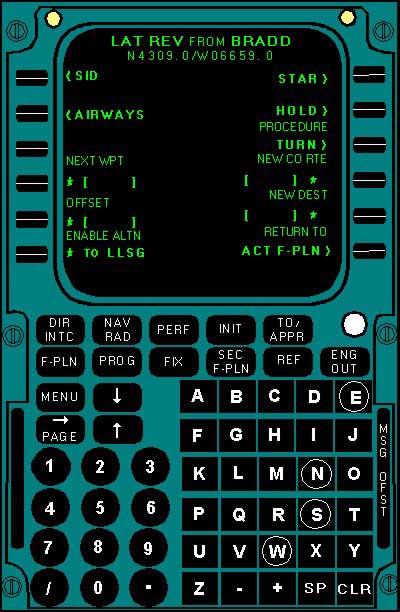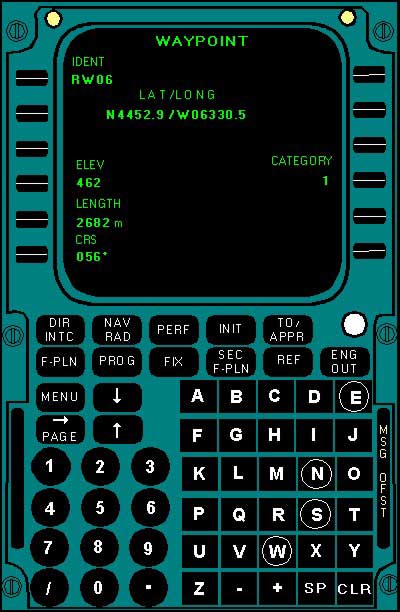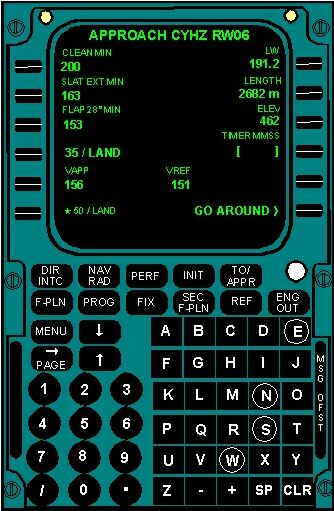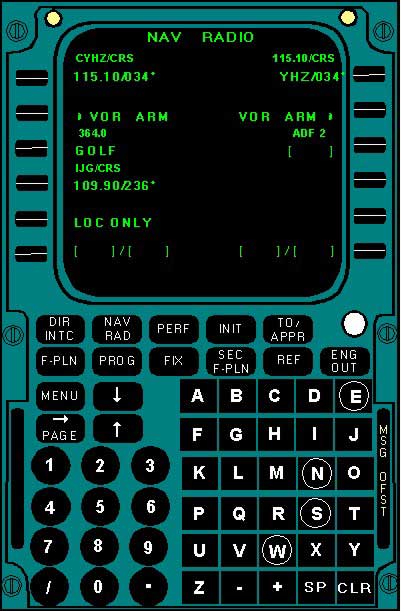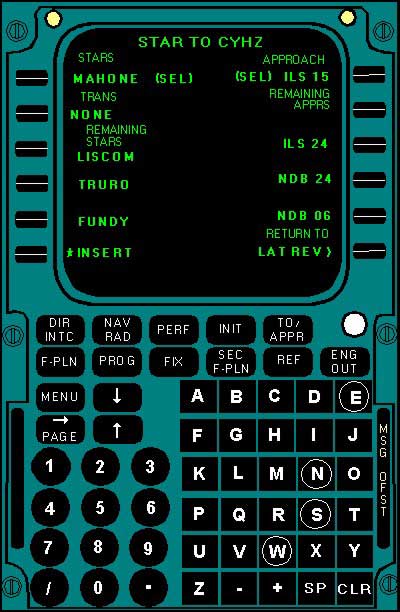Associated links (A98H0003)
Flight management system
Flight management system description
The FMS is used by pilots for flight planning, navigation, performance management, aircraft guidance, and flight progress monitoring. Pilots use the FCP to select flight modes and the MCDU to enter flight plans and other flight data. The FMCs use the flight data to generate a flight profile from the origin to the destination airport. The FMCs then guide the aircraft along that profile by providing moding requests, speed targets, and altitude targets to the FCCs. Roll commands provide lateral control. Pitch commands are only provided during descent when the aircraft is on path. The FMC navigation database includes most of the information the pilot would normally obtain by referring to navigation charts. This information can be displayed on the MCDU or the EIS map.
Situational awareness of airports
The SR 111 flight crew had several options available to help them determine their position relative to a diversion airport.
Closest airports
Pushing the REF mode key on the MCDU selects the REF INDEX page from which several reference pages can be accessed.
Upon selection of the left line select key adjacent to the CLOSEST AIRPORTS option, the closest airports in order of distance from the aircraft are displayed on the MCDU. The flight crew may enter airport identifiers in the fifth line position to display the bearing and distance to that airport.
Navigation display
The NDs are located on the captain's and first officer's instrument panel. The ND displays aircraft position, way points, navigational aids, airports, weather, ground speed, true airspeed, wind speed and direction, time, and flight plan. The EIS control panel operates the captain's and first officer's ND. It is located on both outboard ends of the glare shield. When the ARPT button is pushed, all airports stored in the FMS database appear on the ND within displayable ranges. Likewise, when the VORNDB button is pushed, all VORs or NDBs are displayed; the bearing pointers (and DME distances) are also displayed depending on the selection of the VOR and ADF switches.
Diverting from the flight plan
In order to divert from their present position directly to another position (i.e., to either the FMS stored flight plan or to a new waypoint or airport), the flight crew could use one of the following methods:
- Use the FMS NAV mode; or
- Use the HDG or TRK mode.
FMS NAV mode
When the DIR/INTC key on the MCDU is pushed, a page similar to the active flight plan is displayed.
The flight crew manually enters the new waypoint or airport (e.g., KBOS, CYHZ) beside the left line select key. The flight crew may also enter a course of intercept beside the first right line select key. Subsequent selection of either the waypoint or intercept will cause the aircraft to fly directly to that point.
If the new point is not in the original flight plan, the MCDU displays the message "F-PLAN DISCONTINUITY."
To clear the discontinuity, the flight crew selects the CLR key on the MCDU scratchpad and presses the line select key beside the F-PLAN DISCONTINUITY message on the MCDU. After reaching the new waypoint, the aircraft flies to the next point on the original flight plan. The DIR TO option, therefore, is only used to fly to any desired point.
Heading/Track mode
The HDG or TRK mode is selected by pushing the HDG/TRK button on the FCP. To engage the mode, the flight crew either pushes or pulls the heading knob. The flight crew can have the autopilot fly a selected heading or track to the waypoint or airport.
In the TRK or HDG mode, a dashed line appears on the ND from the aircraft's position to the edge of the ND range. This line indicates that the flight crew may select a direct track on which the aircraft can fly to an airport or NAVAID as displayed on the ND.
Inserting a new destination
To insert a new destination into the flight plan, the flight crew selects the left line select key beside the last waypoint overflown (BRADD) on the MCDU. The LAT REV page appears.
The flight crew enters the airport identifier for the Halifax International Airport, CYHZ, and then selects the right line select key beside the NEW DEST prompt; this returns the MCDU to the original F-PLN page, which displays a discontinuity after the lateral revise point, followed by the new destination, CYHZ.
Obtaining information for the Halifax International Airport
There are two methods of obtaining runway information on the Halifax International Airport from the MCDU:
- Select the reference page; or
- Select the TAKE-OFF/APPROACH page.
Reference Page
To display the reference page, the flight crew selects the REF mode key and then selects the WAYPOINT option.
The waypoint reference page appears blank, except for the title. The flight crew enters CYHZ06 beside the first left line select key. The information for Runway 06 appears.
TAKE-OFF/APPROACH page
The flight crew selects the TO/APPR mode key once the new destination is inserted into the flight plan.
Back-course approach
Although the FMS equipment on Swissair's MD-11 does not display nor allow selection of back-course information, Swissair uses a standard operating procedure to conduct non-FMS back-course approaches. The flight crew enters the information into the MCDU by selecting the NAV/RAD mode key. The flight crew manually enters the approach frequency and the appropriate front beam inbound course beside the fourth left line select key (the ILS.CRS field). The aircraft then flies on ATC vectors for the final approach using the HDG mode. When established on the inbound course, the flight crew switches to the TRK mode.
Programming the FMS for an approach into Halifax Airport
When the flight crew selects the F-PLN mode key, the active flight plan appears. When the left line select key beside CYHZ is selected, the LATERAL REVISION page appears.
The flight crew then selects the right line select key beside STAR. A list of FMS-stored instrument approaches to the Halifax International Airport appears on the right side of the page and available STARs appear on the left side of the page.
The flight crew then selects the desired approach. Since there is no back-course approach in the FMS database, the NDB for Runway 06 can be selected.
